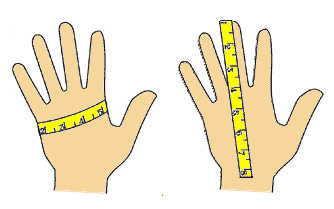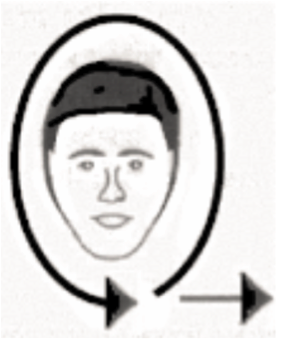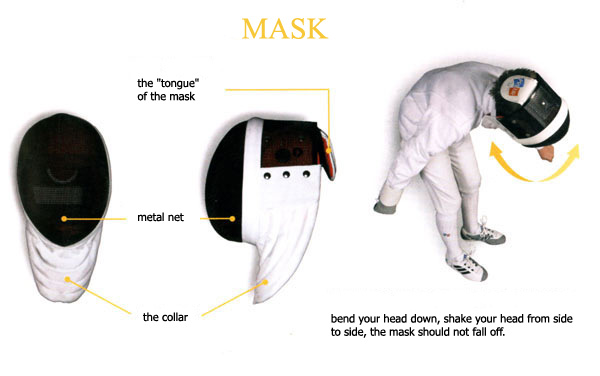It may seem hard to believe, but Fencing is actually a pretty cheap sport to participate in compared to others. The problem is that you have to spend a lot up front on equipment instead of spreading the costs out over time, which creates a high barrier to entry.
This is why the club provides some equipment for members to use to help them get started, improving access to the sport.
Once you’ve decided to pursue the sport, it’s time to look at purchasing your own kit and freeing up club resources for new members. You can do this gradually as finances permit, but then you are faced with a bewildering array of options. Which epee? Which mask? What size? Where from?
This guide aims to assist you in making your first purchases. Remember you can also talk to experienced fencers and coaches at the club to help you decide what is right for you – and how to look after it.
What to Buy
The order you choose to buy things may depend a lot on your circumstances and preferences. Buying your own mask and glove should be the first priority, after that it is up to you.
Eventually you will want to own:
Jacket, Breeches, Mask, Glove, 2 weapons, 2 bodywires, a lamé if you fence sabre, and a bag to carry it all in. You may also be looking at a chest protector and a plastron.
You will need long socks to wear with your breeches (soccer socks also work well). Fencing shoes are available, but are beyond the scope of this guide. Any indoor court shoe will perform well for fencing.
Gloves
Gloves are relatively inexpensive, and so are a popular first item to purchase.

Glove sizes are based on a measurement around your hand. Check the suppliers size guide to convert your measurement to a size. However this makes no allowance for short or long fingers, so if you might want to try some on to check what you prefer.
To fence electric, it is best to have a glove with a velcro opening. Older style gloves with an open hole for the bodywire are no longer permitted in competition. If you aspire to Category 1 and national competitions, make sure your glove is FIE standard.
Sabre gloves have a metallic lame’ cuff for electric fencing. You may prefer to get a regular glove and a separate sabre cuff to wear when fencing electric. Gloves do wear out, and while it is possible to patch them and extend the life, you may find it cheaper in the long run to use a separate cuff.
Masks
Protecting your face and in close contact with it, if there’s one item worth spending money on this is probably it. If looked after a good quality mask will also last a long time, 10+ years is normal.

Masks come in sizes extra-small to extra-large, there is some variation between manufacturers, and the amount and type of padding can also affect fit. If possible, arrange to try on a mask from the manufacturer you are interested in. Otherwise they normally supply size guides you can use.

Padding will compress over time, so a mask that is slightly tight to start with will likely fit well after a few sessions. It is usually the part of the mask to wear out first, masks with removable and replaceable padding are easy to refurbish yourself, and easy to clean.
FIE masks have 1600N material in the bib. You need these for national and international competition. Some styles are only available with an FIE stamp. It is possible to refurbish masks with new bibs and padding – but if it was an FIE mask it will not be FIE rated after bib refurbishment.
The exception is the X-change style masks, which allow you to slide in a new, FIE-rated bib. They are expensive to purchase, but can work out cheaper in the long run. This is particularly true for sabre, where the lame’ material on the bib is usually the first thing to wear out.
The blue club masks are Leon Paul Contour Fit masks – this is what the elastic&black disk arrangement at the back of the mask is. Other masks use a stiff piece that folds down over the back of the head plus a piece of elastic. Both types work fine to keep the mask on and are adjustable.
Foil masks need a lamé piece on the bib to be used in competition. Sabre masks are all exposed metal. Epee masks contain no lamé or exposed metal. For foil and sabre you will want a mask wire to connect your mask to the lamé – get two so you have a spare.
Jackets
Jacket sizes are usually based on a chest measurement and height. Exact cut varies between manufacturers, so for example some may be longer for a given chest measurement than others. It is possible to order custom made jackets to your size if required. When ordering, provide at least chest, waist, hip and height measurements.
Jackets come in Men’s and Women’s designs, and most are specific to left or right handed fencers. (Back-zip jackets are ambidextrous, but you probably want front-zip for ease of use).
You have many, many choices when it comes to clothing items, which are easier to produce than more specialised items. Mostly you’ll have to make up your own mind what features you like the sound of, and how much you want to spend. This is an item where choosing a cheap Chinese item is perfectly fine for club use and local category 2 competitions.
FIE or Non-FIE? You need FIE marked kit for category 1, national and international competition. It means the garment design has been tested and approved to resist up to 800N force. This is generally irrelevant at the club level where fencing is much less fast and forceful than at international level, but some people feel more secure with top-rated garments.
Plastron
This is a half-jacket sleeve worn on the weapon arm. It provides extra protection for the armpit against blades that might penetrate the seam of the jacket.
If you are considering an 800N jacket because you are concerned about safety, you could consider an 800N plastron to wear under the jacket instead.
For competitions you will need a plastron. A 350N Plastron is sufficient for category 2 competitions, but as plastrons tend to last a very long time you are usually better off with 800N which will retain a good resale value.
Breeches
These are usually one of the last things people buy. You will need them for competition, but for club training they are optional. They do however provide better protection than tracksuit pants, so are worth getting, particularly for epeeists. In hot weather they can be more comfortable than trackpants.
Breeches are sized based on waist measurement, and again different manufacturers favour different cuts, so some may have much longer legs for a given waist size than others. If you can, find someone else using clothes from the same manufacturer to get an idea of the proportions they use.
Chest Protectors
Chest protectors are the one bit of equipment that you can potentially buy from non-specialist sources. Martial arts suppliers usually have them.
These are compulsory for women, who have the choice of a full plate or cup style protectors. Sabreurs often prefer the cups as they allow for free lateral arm movement, these are one size fits all. Epeeists usually favour the greater protection of the full plate, some of which are sold in cup sizes similar to bras.
Flat chest protectors are also available for men and young juniors to wear. These are sold in sizes Extra-Small to Extra-Large. They are compulsory for U13’s, optional for everyone else.
[Why are they compulsory for women? Apparently while bruises to breast tissue will heal normally, they can potentially leave damage which will show up on a mammogram later in life, and only a biopsy can confirm it isn’t suspicious]
Bodywires
These are small and inexpensive, and as they spend a lot of time next to your skin they also make a good early purchase.
For sabre you need a 2-prong bodywire, it is generally advisable to get your bodywires and socket from the same manufacturer as there can be small incompatibilities between them.
Be sure to use them correctly to get the longest possible life from them. Keep them separate from your sweaty fencing gear. A 2-prong must have the clip fully released before you try to yank the plug from the socket. Worn and broken latching mechanisms are the usual reason for plugs falling out during a bout, and sometimes for random white lights on the box.
Epeeists use 3-prong plugs., they are pretty much fool-proof.
Lame’s
Electric equipment is more expensive, which is why the club only has a limited amount of it. If you’re tired of swapping sabre lamés this is also a good early purchase, albeit a more expensive one.
Lamés come in right and left hand, men’s and women’s cut. It is usually a good idea to buy a lamé that is one size larger than your jacket (assuming your jacket is a perfect fit, and you’re buying from the same place).
They must come down as far as your hip bones, so if you are very slim you might need to wear a bigger lamé to be legal for competition.
Your options in materials are essentially stainless steel or copper (you may have to hunt through the spec to find out which metal is used). Copper is prone to corrosion, but flexible. Stainless steel is fairly safe from corrosion, but more brittle so more prone to having the metal threads break. Over time, enough broken threads create “dead spots” on the lamé where hits will not register.
Thread count is also important, although usually not advertised. The more threads of metal, the more you can afford to break before a dead spot develops, but also the heavier the lamé will be. In general, “light weight” lamés will not last as long as an equivalent standard lamé.
Whichever you choose, proper care and cleaning will maximise its life. Avoid folding or creasing the lamé, keep it away from your sweaty fencing clothes when not in use, and follow the manufacturer’s cleaning instructions.
Copper is usually cheaper than stainless steel, so if a lamé seems cheap it probably contains copper and/or a low thread count. This is an item where you get what you pay for and the difference in lifespan could be 10 years.
Weapons
Fencing weapons come in both electric and non-electric types. When purchasing your first weapon, you are advised to buy an electric weapon. This can be used both on the electric scoring pistes, and for practice.
Your weapon can be the most confusing piece of equipment to buy, there are so many options! Let’s break the weapon down into its components so you can consider them individually.
The Guard – You can get light-weight guards, which will be more prone to damage than heavier ones. Most people do not need a light-weight guard, it is something you can consider later if you get very serious about competition.
Padding – this provides some protection for your thumb against the metal guard, and protects the wire(s) where they connect to the socket (epee). There are a variety of materials available, for your first weapon it doesn’t really matter, plastic is long lasting and the usual default.
Socket – For Epee you want a 3-pin socket. For Sabre get a 2-pin socket. It will need to match your bodywire plug, very few people are using bayonet plugs now.
Grips – The big choice for epee is French Grip or Pistol Grip. Sabreurs don’t get a choice. However you may have strong opinions about what the grip is made of – leather, rubber, smooth plastic, grippy, plastic, thicker or thinner construction. Try a few at training to see what you like best.
French grip is usually used for beginners, because it forces you to learn to fence using your fingers. Most, but not all, fencers move to pistol grip at some point. Different grips favour different styles of fencing, talk to your coach to understand what your choice of grip will mean for you.
Pistol grips come in a wide variety of styles and different sizes, you really want to try before you buy. Which pistol grip to choose is definitely personal preference. If you choose pistol grip remember that you use it the same way as a French grip – you must remember to use your fingers.
Pistol Grips are usually either plastic or aluminium, and may have various coatings applied.
Pommel – If you chose a pistol grip (or are buying a sabre), you will need a pommel nut to hold it on the blade. If you chose a french grip then you will use a full size pommel.
Pommel nuts for pistol grips are tightened using hex keys. Some pommels, and sabre pommel nuts also use hex keys, others are tightened by hand.
The Blade
On an electric foil or epee you have the metal blade, wire(s) running down the length of it, and a tip – which consists of barrel, point, screws and springs.
A “wired blade” will include all those components. A “complete electric weapon” or “complete epee” describes a complete sword wired up and ready to fence with. “Blade Only” will normally mean you are getting only the metal blade, and are expected to glue in the wire and assemble the tip yourself.
The important thing to remember when choosing a blade is that they are consumables, like printer cartridges. They wear out and break – they are in fact designed to break before your opponent does – how long they last depends on the blade, and on how you use it.
Normal variations in the forging process can mean the “same” type of blade may last longer one time than another, blades from the same batch at the forge will usually be just as good, or bad, as each other. Sometimes bad batches happen and your new blade snaps the first time you use it. You can return them, but it depends a lot on where you bought it.
How you use it is important, excessive bending, hitting at funny angles or too hard can all reduce the lifespan of your blade. If you are a beginner and still learning to judge distance and hit correctly, then it is a good idea to start with cheaper blades.
Learn to maintain them properly to maximise their lifespan, and always take time to wear in a new blade before using it on the piste. That means gently bending the blade the right way, repeatedly making hits in a careful and controlled manner to develop a correct bend in the blade before using it in a fencing bout. Also find out how to put a set in the blade.
FIE vs Non-FIE
You need FIE stamped blades for national and international competition. Often they are stronger and last longer, but this is not always the case. The FIE are only concerned with how safely they perform under pressure.
Note that your choice of grip will influence which blade you order. Pistol grip blades have a shorter tang (the bit that the grip slides onto).
Where To Buy
You essentially have two choices. Buy online from an international equipment supplier, or buy from one of the local importers.
Local importers cannot normally compete on price, however they can obtain cheaper brands that are often difficult to obtain for individuals. They will also supply items from a range of manufacturers so you are not locked in to one choice by shipping rates.
The main benefit to buying locally is service and support. They can assist you with sizing, if the jacket arrives and doesn’t fit you don’t have to arrange an international exchange yourself. You can try out a grip to see if you like it, and ask for recommendations.
The club primarily deals with and recommends Fencing Imports Australia, located in Mont Albert North.
Buying online is a good option, but you do need to know what you want. While fencing as a niche sport doesn’t tend to attract scams, be aware that some online shops have little interest in servicing international customers, and some manufacturers don’t prioritise dealing with individuals. Check the shipping rates before you commit, and if possible check with other people who have used them to find out about their service and support.
At the time of writing, personal purchases of less than $1000 do not attract customs duties. Take care not to order more than this – dealing with customs is a big pain!
The head coach primarily deals with and recommends Leon Paul, based in the UK. They have a good website ordering system, high quality equipment, and (usually) good customer service. leonpaul.com
Carrying Your Kit
Bags that will accommodate fencing weapons (110cm) are hard to find elsewhere, it’s worth buying a fencing bag to carry everything. They come in a wide variety of sizes and styles to meet varying requirements, from single-weapon bags, to bags that will fit everything you need for an international competition and can be wheeled through airports.
Like clothing, these are produced by a wide range of manufacturers and a cheaper bag may meet your requirements.
A bag with two sections allows you to separate your weapons from your sweaty fencing clothes, and usually also has a small pocket for keeping bodywires safe as well.
Alternatively, you can carry your weapon separately in a PVC pipe (blade carrier), and use a smaller and cheaper bag for the mask and clothing.
